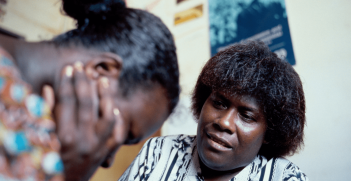Using All Tools of Statecraft to Drive Gender Equality

The Australian Government’s new International Gender Equality Strategy reaffirms its commitment to advancing gender equality as a core element of its foreign policy. At a time of global backlash against gender equality, the Strategy integrates gender considerations across diplomacy, trade, development, and security, underscoring their essential role in fostering regional stability, economic growth, and social cohesion.
Last week the Australian Government released its new International Gender Equality Strategy. This is a positive move during a time of growing global resistance to gender equality and against the backdrop of the United States freezing funding for foreign aid and dismissing DEI initiatives as woke ideology.
Far from ideology, gender equality is not only fair and just, but central to Australia’s interests. A stable and peaceful region is at the heart of the security and prosperity of both Australia and its neighbours. Advancing gender equality, fostering women’s leadership and addressing gender-based violence is a vital driver of a flourishing region – which benefits everyone.
The Strategy focuses on five priorities:
1. work to end sexual and gender-based violence and protect and advance women’s sexual and reproductive health and rights,
2. pursue gender responsive peace and security efforts,
3. deliver gender equitable climate action and humanitarian assistance,
4. promote women’s economic equality and inclusive trade, and
5. support locally led approaches to women’s leadership.
An overarching principal of the strategy is to see gender equality integrated into all areas of Australia’s foreign policy, including bilateral, regional and multilateral diplomacy, trade, development and humanitarian assistance. This is both essential and welcome.
Australia can improve coherence across a range of policy areas with the integration of gender equality across all major investments. This includes sectors that have historically suffered from gender exclusions such as infrastructure, transport, trade negotiations and emerging technologies.
A coherent approach to statecraft allows Australia to recognise the sheer breadth and diversity of instruments available to it. It encourages a creative and flexible approach to international engagement and allows difficult problems to be addressed through multiple means.
For example, development cooperation programs need to engage with systemic drivers of inequality to be effective in the long term – which may include global economic systems and trade arrangements. Through the Strategy, Australia undertakes to pursue gender equality provisions in all future trade agreements and policies. This is already happening to some extent, (for example the Australia-UAE Comprehensive Economic Partnership Agreement includes a chapter on gender balance and economic empowerment and the Australia-United Kingdom Free Trade Agreement includes specific trade and gender equality provisions). It is a clear example of different elements of national power being used to ensure gender equality is addressed as both a standalone priority and a cross-cutting issue.
In the Pacific, where climate change is viewed as the single greatest security threat, responding effectively will require gender sensitive efforts. The mutually reinforcing nature of gender equality and climate change means that efforts need to address both issues, including support for more women in national parliaments and more inclusive disaster planning, response and recovery efforts. There are opportunities for Australia and the Pacific to work together to ensure prevention, adaptation and response to disasters and climate change is gender inclusive across the range of security and development agencies involved.
Going forward, it will be interesting to see how greater coordination and policy coherence across different foreign policy tools is achieved in practice. There is also a need to ensure international efforts to promote gender equality align with domestic policy endeavours. This calls for a genuine whole-of-government approach that includes clear leadership, embedded governance structures and adequate investment to maximise the use of resources, leverage synergies, reduce duplication and support accountability.
As Foreign Minister Penny Wong writes in the Strategy’s Foreword “policies that contribute to gender equality and to women and girls’ empowerment are not simply an appendix to the rest of our foreign policy”. Gender equality fuels economic growth, strengthens social cohesion and is an essential building block for a peaceful, prosperous and flourishing world. Given the centrality of gender equality to a secure and prosperous region and world, all tools of statecraft should be brought to bear to see this ambition realised.
Heather Wrathall is Senior Policy Analyst at the Asia-Pacific Development, Diplomacy & Defence Dialogue (AP4D).
This article is published under a Creative Commons Licence and may be republished with attribution.





